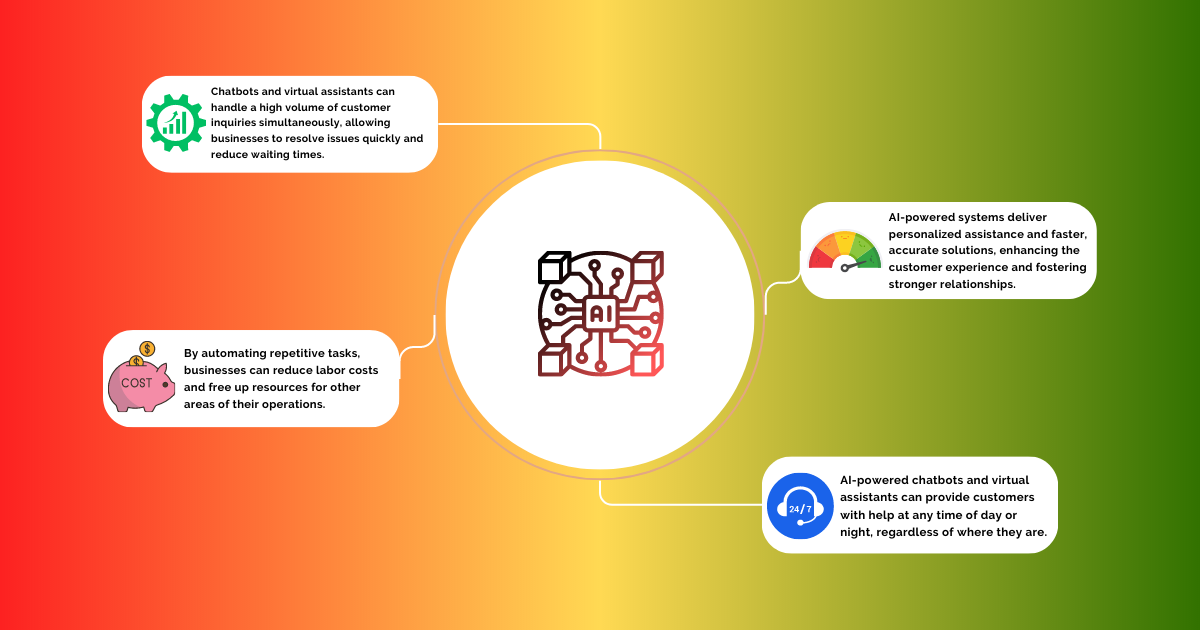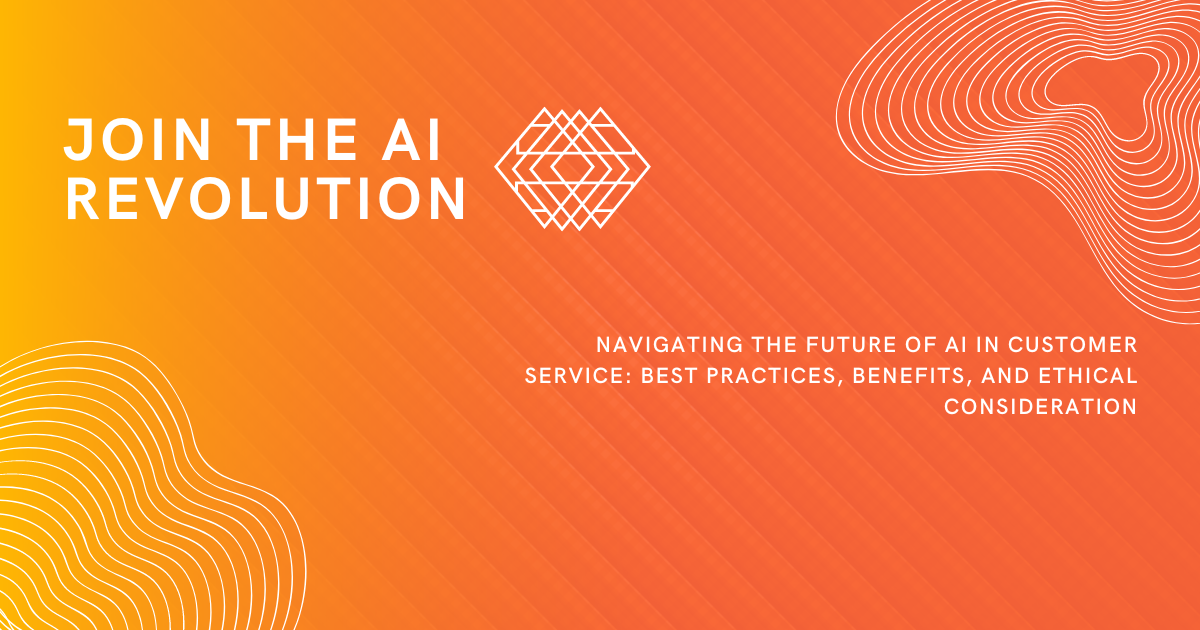Picture this: “You’ve been on hold for what feels like eons at this point. You can feel the tethers of your patience snapping like a rubber band stretched to its limits, and yet no sign of a customer service representative. You are nowhere near solving your issue, Your anger has reached critical mass, and you slam the phone in rage. Mood ruined, day ruined. 😡”
Picture this: “You’ve been on hold for what feels like eons at this point. You can feel the tethers of your patience snapping like a rubber band stretched to its limits, and yet no sign of a customer service representative. You are nowhere near solving your issue, Your anger has reached critical mass, and you slam the phone in rage. Mood ruined, day ruined. 😡”
We’ve all been there. 😓 To be honest, it’s not like customer service representatives are lounging by the pool enjoying tropical drinks with their feet up while you pull your hair out on hold. They are usually swamped with customer queries and are trying their best to provide the best support they can with the resources and capabilities they have at their disposal.
The good news:
Artificial intelligence (AI) ensures that you never have to pull your hair out or slam your phone over poor customer service ever again.
From chatbots to virtual assistants, AI is revolutionizing how businesses interact with customers. But with great power comes great responsibility - and that's where this comprehensive guide comes in. Buckle up and get ready to explore the benefits, challenges, and ethical considerations of AI in customer service. It's time to prepare for the future and embrace the robotic revolution!
The Role of AI in Customer Service
AI has been transforming various industries, and customer service is no exception. In recent years, businesses have leveraged AI to automate customer service processes and provide a seamless customer experience.
Chatbots, virtual assistants, and predictive analytics are the most common AI applications in customer service.
Chatbots are computer programs that use natural language processing (NLP) to simulate conversation with human users. In recent years, they have seen the most widespread use of any AI-powered technology. The fact that they can be configured conversationally to resemble a human speaker has skyrocketed their use.
By the end of 2023, chatbots will drive eCommerce sales to a staggering $112 billion.
Virtual assistants, on the other hand, are more sophisticated AI-powered systems that can provide personalized assistance to customers.
They can also perform more complex tasks like booking reservations, scheduling appointments, and providing product recommendations. Prime examples being Apple’s Siri and Amazon’s Alexa.
Predictive analytics, another common application of AI in customer service, involves using algorithms to analyze customer data and anticipate their needs. Predictive analytics has existed for quite some time now, but with the introduction of AI into the mix, avenues of application have grown exponentially.
In customer service, AI-powered predictive analysis has rapidly improved businesses' ability to predict and understand their customers' behavioral patterns accurately. Below is a chart that shows how AI-powered predictive analysis impacts different market segments making it easier for marketers and support to provide more tailored customer experiences to their customers.
 Source: Comparison Between Traditional Segmentation and AI Segmentation (World Scientific)
Source: Comparison Between Traditional Segmentation and AI Segmentation (World Scientific)
The role of AI in customer service is not limited to these three applications. AI can also be used to analyze customer feedback, monitor social media channels, and automate customer surveys.
With AI, businesses can gain insights into customer behavior and preferences, enabling them to make data-driven decisions and improve their products and services.
Benefits of AI in Customer Service
The use of AI in customer service offers several benefits to both businesses and customers. These benefits include improved efficiency, cost savings, and increased customer satisfaction.
One of the most significant advantages of AI-powered customer service is improved efficiency. Chatbots and virtual assistants can handle a high volume of customer inquiries simultaneously, allowing businesses to resolve issues quickly and reduce waiting times.
They help nullify the negative aspects of customer service that stem from matters such as fatigue, emotional consistency, errors, etc. Simply put, AI is devoid of emotion and physical limitations. You can ask a chatbot the same question a hundred times and get the same answer a hundred times unless it is programmed to answer otherwise.
These caveats help improve overall customer service and customer satisfaction and reduce the workload for human customer service representatives, who can focus on more complex tasks.

Another benefit of AI in customer service is cost savings. By automating repetitive tasks, businesses can reduce labor costs and free up resources for other areas of their operations.
Additionally, using AI can help businesses identify areas where they can improve their processes, reduce waste, and optimize their supply chains.
Amazon has taken this concept and run with it with their Amazon Go stores. They are basically walk-in stores with no checkout or employees. AI handles everything. You can simply walk into the store with your own grocery bag and pick up what you need and leave. AI records every purchase meticulously and charges you with the Amazon Go app.
AI has helped Amazon simplify the shopping process itself, cutting operational costs, all the while improving the customer experience. This kind of advancement is simply unprecedented.
AI-powered systems can provide personalized assistance and deliver faster, more accurate solutions to customer inquiries. This can improve the overall customer experience and build stronger relationships between businesses and their customers.
The upshots are never ending. AI can also help businesses provide 24/7 customer support, which is essential in today's fast-paced, always-on digital world.
With AI-powered chatbots and virtual assistants, customers can get help at any time of day or night, regardless of where they are.
Best Practices for Implementing AI in Customer Service
While the benefits of AI in customer service are clear, businesses must approach its implementation carefully to avoid potential pitfalls. Here are some best practices to follow when integrating AI into your customer service operations:
Develop a strategy for AI and human collaboration
Businesses must determine how AI-powered systems will work with human customer service representatives to ensure a seamless customer experience. Human agents can handle more complex tasks that require empathy, critical thinking, and emotional intelligence, while AI can automate repetitive tasks and provide quick solutions to straightforward customer inquiries.
This is easier said than done but the strategy outlines how humans and AI can complement each other's strengths and weaknesses, and how to manage the potential risks and challenges that arise when deploying AI systems alongside human workers.
The goal of developing an AI and human collaboration strategy is to create a harmonious and productive working relationship between humans and AI systems. This involves identifying tasks that are best suited for human workers and tasks that can be automated using AI systems as mentioned earlier. It also involves determining how humans and AI systems can collaborate effectively on tasks that require a combination of human and machine intelligence.
- Some key elements of an effective AI and human collaboration strategy include:
- Defining the roles and responsibilities of humans and AI systems in the workflow
- Establishing clear communication channels between humans and AI systems
- Providing training and education for human workers on how to work alongside AI systems
- Ensuring that the AI systems are transparent, explainable, and accountable
- Regularly monitoring the performance of the AI systems and making necessary adjustments to the workflow as needed.
Ultimately, an effective AI and human collaboration strategy can help organizations leverage the strengths of both humans and AI systems to achieve better results and drive innovation.
Maintain transparency and avoid bias
Bias can be a big issue when training and implementing AI systems. For all the amazing things an AI powered system can do it still has to be taught and if it is taught wrong it will do wrong.
To put simply bias in the context of training AI systems refers to the presence of systematic and unfair inaccuracies or errors in the data used to train the AI. When an AI system is trained on biased data, it can lead to biased results or decisions.
Bias can arise in many ways during the development and training of AI systems. For example, data that is not representative of the population being studied can result in biased models. Biases can also arise when data is collected or labeled by humans, who may have their own inherent biases or prejudices.
AI systems can also exhibit bias when the algorithms or models used to analyze the data have inherent biases or flaws. For example, an algorithm that is designed to optimize for cost efficiency may overlook factors like environmental impact or social responsibility, resulting in biased decision-making.
To mitigate bias in AI systems, it's important to use diverse and representative data sets, carefully evaluate and select algorithms and models, and regularly monitor the system for bias and take corrective actions as necessary. It's also important to ensure that ethical considerations are taken into account during the entire development and deployment process.
Effectively integrate and maintain AI systems
Businesses must ensure that their AI systems are effectively integrated with their existing customer service operations and that they are regularly maintained and updated. Following is an action plan to aid in going about doing this.
- Identify the right use cases: Before implementing an AI system, it is important to identify the right use cases that can provide the most value to your customers and your business. For example, chatbots can be used to handle simple and repetitive customer inquiries, freeing up human agents to focus on more complex tasks.
- Build a strong data foundation: AI systems rely on data to make informed decisions, so it is important to ensure that you have clean and structured data to train your AI models. This may involve data cleaning and normalization, as well as creating a data governance framework to ensure the accuracy and consistency of your data.
- Choose the right AI system: There are many different types of AI systems available, each with their own strengths and weaknesses. When selecting an AI system for customer service, it is important to choose a system that is well-suited to your specific use case and can integrate seamlessly with your existing customer service channels.
- Implement the AI system in a phased approach: Rather than implementing the AI system all at once, it can be helpful to roll it out in phases, starting with a small subset of use cases and gradually expanding over time. This approach can help you identify and address any issues or challenges before scaling the AI system to a larger audience.
- Train and monitor the AI system: AI systems require ongoing training and monitoring to ensure that they continue to perform effectively over time. This may involve regularly retraining the AI models with new data, as well as monitoring performance metrics to identify any areas for improvement.
- Provide a seamless customer experience: To ensure a positive customer experience, it is important to design the AI system to integrate seamlessly with your existing customer service channels. This may involve providing clear instructions for how to use the AI system, as well as offering human support when necessary.
Ensure data privacy and security

With the collection and use of customer data, businesses must ensure that their AI systems are secure and comply with data privacy regulations. Following are some guidelines that need to be considered to ensure data privacy:
- Data Encryption: Sensitive customer data should be encrypted to prevent unauthorized access.
- User Access Control: Limiting access to customer data can help prevent unauthorized use or misuse of the data. Implementing user access controls can ensure that only authorized personnel have access to sensitive customer data.
- Compliance with Regulations: Businesses must comply with data privacy regulations such as GDPR, CCPA, and HIPAA. It is important to ensure that any AI systems implemented are fully compliant with relevant regulations.
- Regular Audits: Regular audits of the AI system can help identify any vulnerabilities or potential security breaches.
- Secure Storage: Customer data should be stored in secure locations with restricted access. Cloud-based storage solutions should be properly configured with the appropriate security protocols to ensure that customer data is safe.
Provide ongoing training and support
Integrating AI systems into customer service can be a big change for employees, so it's important to provide them with ongoing training and support. Here are some reasons why:
Firstly, introducing new technology like AI can cause some employees to worry about job security. By providing training and support, you can help them feel more comfortable and confident in using the new technology.
Secondly, AI systems may require employees to learn new skills or modify existing ones. Ongoing training can help them keep up with the latest changes and improve their performance.
Another reason to provide ongoing training is to help employees troubleshoot any issues that may arise. AI systems can encounter glitches or bugs, which can negatively impact the customer experience. With adequate training, employees can identify and address issues quickly and ensure a smooth customer experience.
Finally, AI systems are constantly evolving and improving, so it's important to keep employees up-to-date on the latest developments. Ongoing training can help them stay informed about new features and functionalities and suggest improvements to the system.
.
Ethical Considerations of AI in Customer Service

There are lots ethical conundrums to consider when implementing AI in customer service. We’ve already discussed some while going through the best practices.
Mainly data privacy and bias avoidance when training systems but now we discuss some intangible ones that are just as important when it comes to their impacts on customer service
Transparency in decision-making processes is extremely crucial when it comes to AI in customer service. Customers have a right to know how AI systems make decisions that affect them.
Businesses must be transparent about how their AI systems work, what data they use, and how they make decisions. This can help build trust with customers and ensure fair and ethical outcomes.
Moreover, lack of human empathy is another ethical consideration when it comes to AI in customer service.
While AI systems can provide quick and efficient solutions to customer inquiries, they may lack the human empathy and emotional intelligence that customers expect from human customer service representatives.
To ensure the best possible customer experience, businesses must balance using AI for efficiency while providing human touchpoints where necessary.
Finally, using AI in customer service may lead to job displacement for human customer service representatives. Businesses must consider the potential impact on their workforce and implement strategies to upskill and reskill employees for new roles. This can help retain valuable employees and improve the overall quality of customer service.
The Future of AI in Customer Service
As AI technology evolves, so will its role in customer service. Here are some emerging trends and opportunities in AI that businesses should be aware of:
Advanced analytics
AI-powered analytics can give businesses more profound insights into customer behavior and preferences, allowing them to further personalize their services and products.
With radical improvements in AI fields such as predictive and sentiment analysis, analytics can see a massive upgrade in the near future.
Predictive and sentiment analysis is at the forefront of customer service innovation. Soon businesses will be able to analyze customer data and identify potential problems before they escalate, understand how customers feel about their products or services, and personalize the customer experience.
As AI technology evolves, we can expect to see even more innovative and effective ways to use predictive and sentiment analysis in the customer service industry. Some of the ways these techniques could impact the future of advanced analytics in customer service include:
- Identifying potential problems before they escalate. Predictive analysis can be used to identify customers who are at risk of churning (canceling their service), or who may be experiencing problems with a product or service. This information can be used to reach out to customers and offer them assistance before they become frustrated and leave.
- Understanding how customers are feeling. Sentiment analysis can be used to understand how customers are feeling about a company's products or services. This information can be used to improve customer satisfaction and loyalty. For example, a company could use sentiment analysis to identify negative customer reviews. Once these reviews have been identified, the company could reach out to the customers and try to resolve their issues.
- Personalizing the customer experience. Predictive and sentiment analysis can be used to personalize the customer experience. For example, a company could use predictive analysis to identify customers who are likely to be interested in a new product or service. Once these customers have been identified, the company could reach out to them and offer them a special promotion.
By using predictive and sentiment analysis, businesses can improve customer service in a variety of ways. This can lead to increased customer satisfaction, loyalty, and revenue.

Natural language processing
Natural language processing (NLP) enables AI systems to understand and interpret human language, allowing for more natural and intuitive interactions between customers and AI-powered systems.
As time passes, machines will learn more and more human speech patterns, allowing them to comprehend most human interactions.
Even the unpredictable emotional element of human interaction can be somewhat nullified if a system is exposed to a high enough volume of situations. The more situations it faces, the higher the chances of it correctly comprehending human speech patterns.
For example, NLP can be used to create chatbots that can conversationally answer customer questions. This can free human customer service representatives to focus on more complex issues.
Augmented reality
Augmented reality (AR) is a technology that superimposes a computer-generated image on a user's view of the real world, thus providing a composite view. AR has the potential to revolutionize customer service by providing a more immersive and interactive experience for customers.
There are already a number of ways that AR is being used in customer service. For example, AR can be used to:
- Provide product demonstrations: AR can be used to show customers how to use a product or service. This can be helpful for products that are difficult to understand or use. For example, IKEA has developed an AR app that allows customers to see how furniture would look in their homes before they buy it.
- Provide customer support: AR can be used to provide customers with support when they are having problems with a product or service. For example, if a customer is having trouble setting up their new printer, an AR assistant could walk them through the process step-by-step.
- Enhance the customer experience: AR can be used to enhance the customer experience in various ways. For example, AR can provide customers with information about products or services or create interactive experiences. For example, the National Museum of Natural History in Washington, D.C., has developed an AR app that allows visitors to see dinosaurs come to life.
As AR technology develops, we can expect to see even more innovative and effective ways to use AR in customer service. AR can potentially provide a more immersive, interactive, and personalized customer experience. This could lead to increased customer satisfaction, loyalty, and revenue.
Intelligent assistants
Have you noticed how popular intelligent assistants like Amazon Alexa and Google Assistant are becoming? They can do everything from making appointments and setting alarms to answering your burning questions and providing customer support.
But did you know that as these assistants become more sophisticated, they're also starting to play a huge role in customer service? They can answer customer questions, resolve issues, and even personalize the customer experience by providing tailored recommendations.
Between 2023 and 2026, intelligent assistant use is looking at an increment of 7.6% from 146 million users to 157.1 users.
Source: Statista
As these intelligent assistants continue to develop, they have the potential to revolutionize customer service by providing 24/7 support, resolving issues quickly and easily, and personalizing the customer experience. This can help businesses improve customer satisfaction, loyalty, and revenue.
Voice-based interfaces
As voice technology continues to improve, businesses can leverage it to provide more natural and intuitive interactions between customers and AI-powered systems, allowing customers to quickly and efficiently get the information they need quickly and efficiently.
While the future of AI in customer service is exciting, it is essential for businesses to consider the potential impact on their workforce and to ensure they are upskilling and reskilling employees to prepare for these changes. Businesses must also prioritize ethical considerations like privacy and bias to ensure they deliver fair and ethical services to their customers.
The future of AI in customer service holds great promise for businesses and customers alike. By embracing these emerging trends and opportunities and prioritizing ethical considerations, businesses can deliver exceptional customer experiences and stay ahead of the curve in this rapidly evolving field.
Embracing the AI Revolution: Paving the Way for a Customer Service Transformation
The use of AI in customer service can revolutionize how businesses interact with their customers, leading to improved efficiency, cost savings, and customer satisfaction. However, businesses must also be aware of the ethical considerations and challenges of implementing AI systems. By maintaining transparency, mitigating bias, and providing human touchpoints where necessary, businesses can ensure they deliver fair and ethical services to their customers.
Looking to the future, AI technology will continue to evolve and present new opportunities and challenges for businesses. By staying up-to-date with emerging trends and leveraging new technologies such as advanced analytics, natural language processing, and intelligent assistants, businesses can stay ahead of the curve and deliver exceptional customer experiences.
As businesses navigate the future of AI in customer service, it is important to prioritize ethical considerations and prepare their workforce for the changes ahead. By doing so, businesses can successfully navigate the challenges and reap the benefits of this exciting technology.

